It is advisable to become well acquainted with the roulette wheel and the distribution of its numbers prior to joining the table to place your wagers. Why? The answer is simple – the wheel serves the most important function in the entire game as its one and only purpose is to determine the winning bets.
In brick-and-mortar venues, the wheel on the roulette table is in a perpetual motion which is not the case when one plays the game online from the comfort of their home. The constant spinning makes for a faster-paced game, but the main reason why the wheel is always in motion is to prevent players from complaining the device is spun too hard or not hard enough by the croupier – something which, needless to say, would influence the outcome of each spin.
Understanding the distribution of the numbers on the wheel is extremely important when one wants to play smartly and implement a given strategy. Also, in European and French roulette there is only one zero pocket on the wheel, while the wheels used in American casinos have 00 and 0 pockets – this greatly influences the way the numbers on the two types of wheel are distributed.
Understanding the Roulette Wheel
Before we proceed to list the differences between the two types of roulette wheels, it is important to mention the numbers on the spinning devices are not distributed at random, although at first glance it may appear to be so. On the contrary, the numbers are spread in a specific way to separate the red and black, odd and even, and high and low numbers in a mathematically balanced pattern.
There are several reasons for this distribution and the first one is to confuse inexperienced players. The latter struggle to form a mental picture of the roulette wheel, not to mention they altogether fail to understand there is actually a relation between the numbers and the wheel’s sections. Seasoned players, on the other hand, have memorised the numbers’ sequence.
Then again, the numbers should alternate depending on their colour. A red number is always positioned next to a black number and this applies to both American and European roulette wheels. The same is valid for odd and even numbers which also need to be distributed as evenly as possible – there should not be more than two adjacent odd or even numbers on the wheel.
Finally, low (1 through 18) and high (19 through 36) numbers should alternate as much as possible. The wheel in American roulette is not as balanced as there are more sections with adjacent Low and adjacent High numbers.
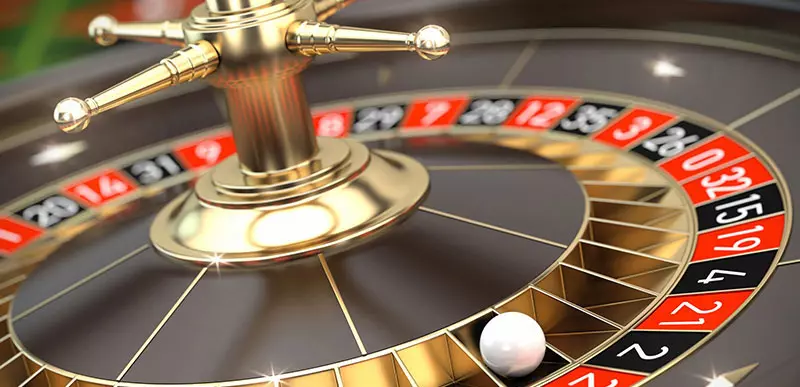
Types of Roulette Wheels
Many gambling venues have adopted European roulette wheels with a specific order of the numbers, starting with the single zero and moving on from there. It goes without saying the order of the numbers differs in American roulette where a double-zero wheel is used. Read on to find more about the differences between the American and European roulette wheels.
Roulette Layout
Roulette Wheel Types
Roulette House Edge
Roulette Inside Bets
Roulette Outside Bets
The Wheel in American Roulette
In American roulette, the wheel has a total of 38 pockets – 18 black, 18 red and two green pockets numbered 0 and 00. The 0 and 00 pockets are located on the opposite sides of the wheel. Black and red pockets always alternate. If you look closely, you will notice the numbers that are positioned opposite to one another differ by one unit only. For instance, 3 is located opposite to 4, 5 is positioned opposite to 6, 7 faces 8 and so on.
When you rotate the wheel so that the 0 pocket is at the top, you will notice an interesting tendency. All even numbers from 2 to 18 and all odd numbers from 19 to 35 are located to the left of the 0 pocket. Thus, if you place bets on all even numbers from 2 to 18 and on all odd numbers from 19 to 35, you would have covered the left side of the American roulette wheel.
It is exactly the opposite when it comes to the right side of the wheel. All low numbers from 1 to 17 are odd and the high numbers from 20 to 36 are even. From this it follows, a player can learn all numbers on the American roulette wheel by heart simply by using the numbers 2 and 19 as reference points.
The introduction of the 00 pocket greatly increases the house edge. Typically, with American roulette the casino has a built-in advantage of 5.26%. The La Partage and En Prison rules can reduce the house advantage, at least for even-money bets, but unfortunately, they do not apply in the American variant of the game.
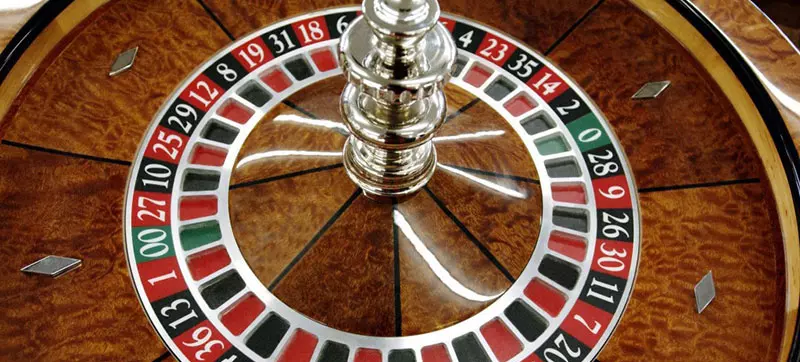
The Wheel in European Roulette
In European roulette, the wheel contains only 37 pockets. Pockets from 1 to 36 are numbered and there is only one pocket marked with 0. The numbers face the inside of the wheel, which is not the case with American roulette, where the numbers are facing the outside of the spinning device.
Since there is a single zero on the wheel, players’ chances of winning with even-money bets are higher. The house edge for European roulette stands at 2.70%.
Similarly to the American variation, the wheel in European roulette has 18 black and 18 red pockets which always alternate. Respectively, there are 18 odd numbers and 18 even numbers. The colours associated with each number follow a specific pattern. For the number ranges 1 through 10 and 19 through 28, the odd numbers are in red pockets and the even numbers are in black pockets. With number ranges 11 through 18 and 29 through 36, it is quite the opposite – the even numbers are red while the odd numbers are black.
The 36 numbers form two arcs – one to the right of the zero pocket and one to the left. In the right arc, there are nine black pockets with low numbers (2, 4, 6, 8, 10, 11, 13, 15 and 17) and nine red pockets with high numbers (19, 21, 23, 25, 27, 30, 32, 34, and 36).
The arc that is to the left of the 0 pocket contains nine black pockets with high numbers (20, 22, 24, 26, 28, 29, 31, 33, and 35) and nine red pockets with low numbers (1, 3, 5, 7, 9, 12, 14, 16, and 18).
Why is this distribution important? In the European variation of the game, players are allowed to place the so-called French bets, which cover specific sections of the wheel. One such bet is the Voisins du Zero or Neighbours of Zero which covers almost half of the entire wheel. This type of bet encompasses 17 numbers (from 22 to 25) surrounding the 0 pocket plus the zero itself.
Tiers du Cylindre is another French bet which covers one-third of the wheel and includes numbers 27, 12, 36, 11, 30, 8, 23, 10, 5, 24, 16, and 33. In European roulette, one can also place Orphelins or Orphans bets. The latter encompass 8 numbers. Three of them (17, 34, and 6) are located to the right of the 0 pocket and the remaining five numbers (1, 20, 14, 31, and 9) are positioned to the left.
In American roulette, placing French bets is impossible since the distribution of the numbers on the wheel is based on another pattern.
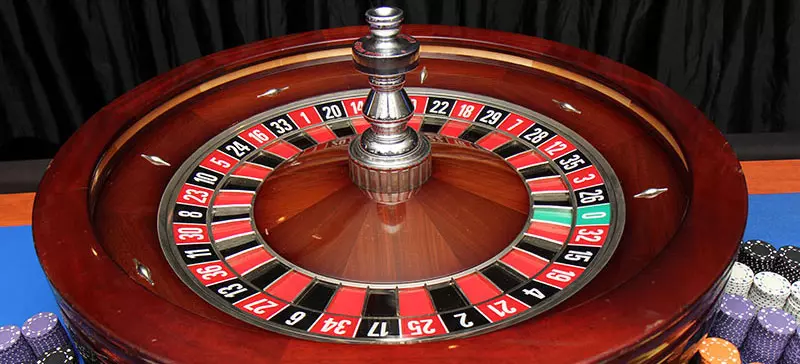
The Wheel in French Roulette
The roulette wheel that is most commonly used in continental Europe is the French one. Much like with the European variant of the game, the wheelhead in French roulette also consists of 37 pockets. Once again, black and red pockets follow one another. By closer inspection, it becomes apparent that aside from the numbers 1 through 36, there is just one 0 pocket, which comes to explain why the wheels that are employed in this roulette variant are commonly referred to as single-zero ones.
The way in which the numbers are arranged on the wheelhead is not the same as with the other roulette games, which is the reason why the number sequence is often referred to as the French number sequence. French roulette can be easily recognised because the numbers grid lays horizontally.
Outside bets are featured on both sides of the numbers grid. The betting options that are available on the top include Black, Even, and High, while the ones that are available on the bottom of the betting layout are Red, Odd, and Low. Just like with American and European roulette, in French roulette, Dozen bets are to be found on the right-hand side of the reel grid.
Furthermore, what players should pay special attention to is that these bet types are displayed using their French names.
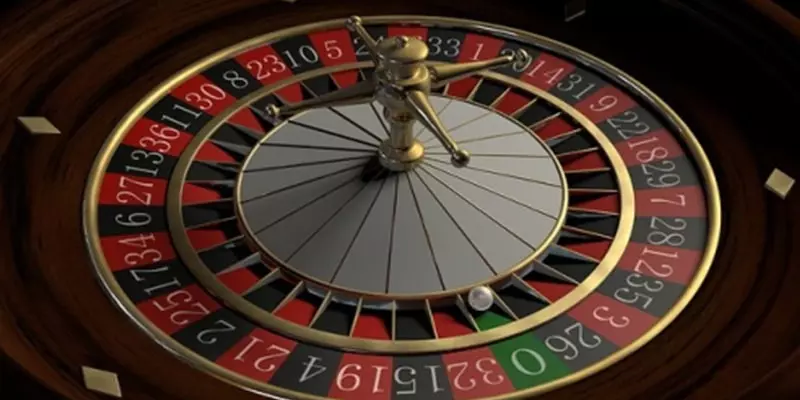
Because of the absence of a 00 pocket, the edge the house gains over players swindles to 2.7% when inside bets are concerned. Furthermore, roulette lovers should not forget about the En Prison rule, thanks to which the house advantage dwindles to 1.35%.
Yet, what gambling enthusiasts should be mindful of is that in spite of the fact that the web-based casinos that have added French roulette to their gaming repertoire are abundant, land-based casinos across Monte Carlo are the most likely places where players can come across this roulette variant.
The Hybrid Wheel
Gambling enthusiasts can also stumble upon the so-called hybrid roulette wheels that are referred to in this way as they blend characteristics from the American and French wheels. Interestingly enough, such roulette wheels have started to gain momentum of recent, and what is specific about them is that they are equipped with just one 0 pocket but at the same time follow the American style.
Hybrid roulette wheels are available in the United Kingdom, but they can be seen in other parts of the globe as well. Such wheels are not alike as casino enthusiasts can come across a handful of variations. Most of the time, players might find hybrid wheels in which the American or French number sequence is put to use.
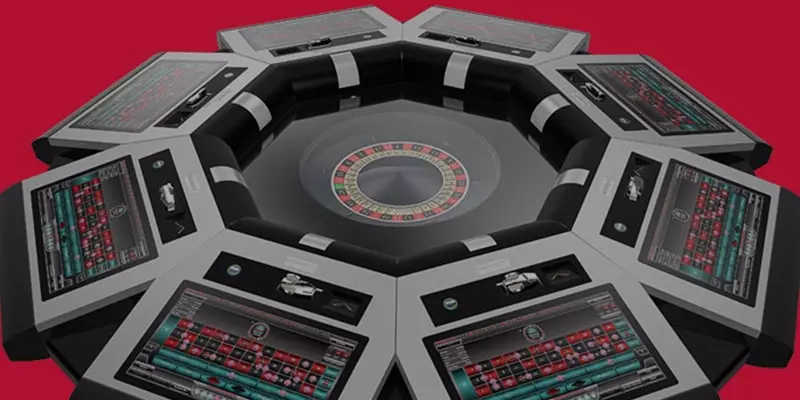
It should be noted, however, that the position of the zero is not consistent due to the fact that on some occasions, it may lay between 2 and 28, while in others, it is positioned between 1 and 27. With some hybrid wheels, the zero pocket is to be found between 26 and 32.
Since the wheel does not feature a 00 pocket, the house advantage is once again 2.70%. Thanks to the La Partage rule, the house edge will be lessened to 1.35% for outside bets. Yet, this rule is rarely employed in casinos across the USA, even the ones that are located in Atlantic City.
Structure of the Roulette Wheel
Interestingly enough, when web-based casinos are concerned, European roulette enjoys much greater popularity among players. Yet, when brick-and-mortar casinos are concerned, this might not always be the case.
When it comes to land-based gambling establishments, the way in which roulette wheels are constructed is roughly the same as they are made up of two main elements, more specifically, a wheelhead and a bowl. The wheelhead is the central part of the roulette wheel that keeps on rotating and is also known as a cylinder. The bowl, on the other hand, is the outer housing of the wheel.
Most of the time, the external housing of the roulette wheel is made of solid wood, while its surface can be either veneer or plastic. The main components of the bowl include the spindle that holds the bowl, the ball track, together with the lower ball track apron where the ball deflectors are positioned.
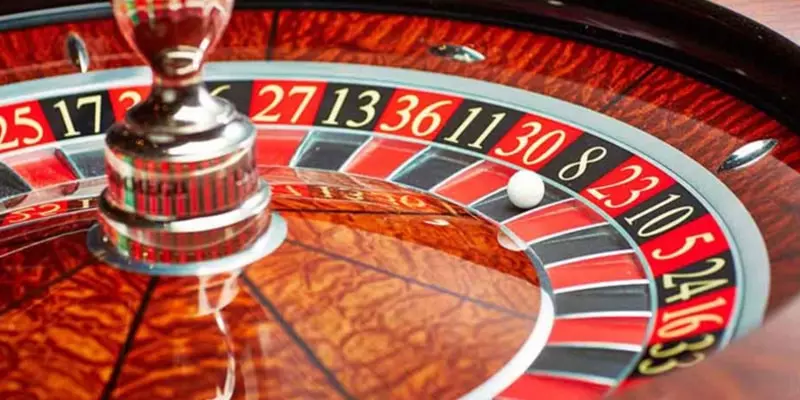
The wheelhead lays within the bowl, and most of the time, its diameter is about 20 inches. In most cases, the wheelhead is fixed using ball-bearing assemblies. The circle that contains the numbers and the ball pockets is to be found on the outer edge of the wheelhead. Another element that deserves attention is the cone or the area that slopes towards the middle of the wheelhead. This area plays a crucial role due to the fact that it will direct the small white ball back to one of the pockets.
Right in the middle of the cone, players will notice the turret that is used in order to adjust the height as with the better part of the roulette wheels there is the possibility to calibrate the wheelhead height. This is done so as to ensure that the ball will not remain there instead of falling into one of the pockets.
The Roulette Ball
Interestingly enough, in the past, the only appropriate material for the creation of roulette balls was ivory. Yet, things have changed dramatically since that time as presently, they can be made from a variety of materials, including phenolic, nylon, or acetal.
The material from which the roulette ball is made is of crucial significance for the simple reason that it will have a heavy impact on the way in which it bounces. In most cases, the bounciest roulette balls are the ones that are molded from nylon.
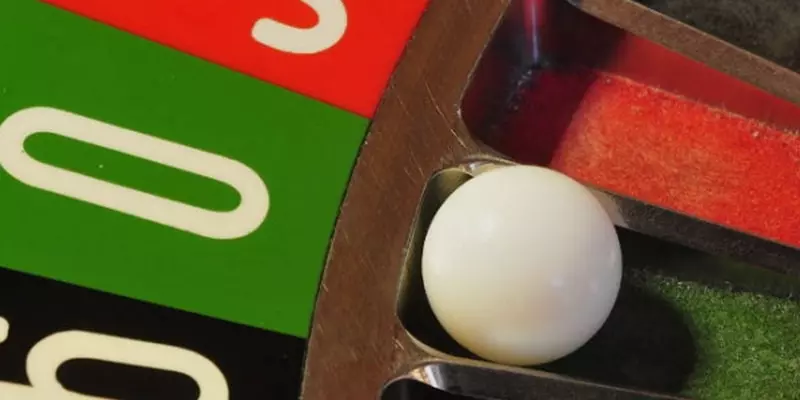
On most occasions, the diameter of the roulette ball is between 13 and 16 inches. Yet, this may not be the case with the gambling establishments in New Jersey as there, the diameter of the roulette ball should be somewhere between 12/16 inches, but cannot exceed 14/16 inches.
In spite of the fact that the size of the roulette ball is a detail most gambling enthusiasts tend to pay little or no attention to, they should be aware that when the ball is larger, it will settle down too quickly. When the ball is smaller, however, it is likely to land in one of the pockets within more bounces.
Types of Pockets
Casino enthusiasts who are looking to gain a better knowledge of the game need to know that the pockets of the roulette wheel might not always be the same. As it seems, at most land-based casinos, players are likely to find roulette wheels that have shallow pocket pads. Such pocket pads are the most common ones just because they make for a broader ball scatter.
More often than not, the roulette wheels are equipped with even frets, meaning that both of their ends will have identical height. There is also the chance to come across a wheel where the frets are inclined towards the center. In the latter case, it will be much harder for gambling enthusiasts to make a correct pick.
Frets that are both smaller and even are also hugely popular among casino operators due to the fact that the gameplay becomes even more thrilling. When such frets are employed, the ball will be more likely to jump from one pocket to another, thus keeping players on the edge of their seats until the last moment. Naturally, if the frets are higher, it will be less likely that players will see how the ball jumps through the different pockets.
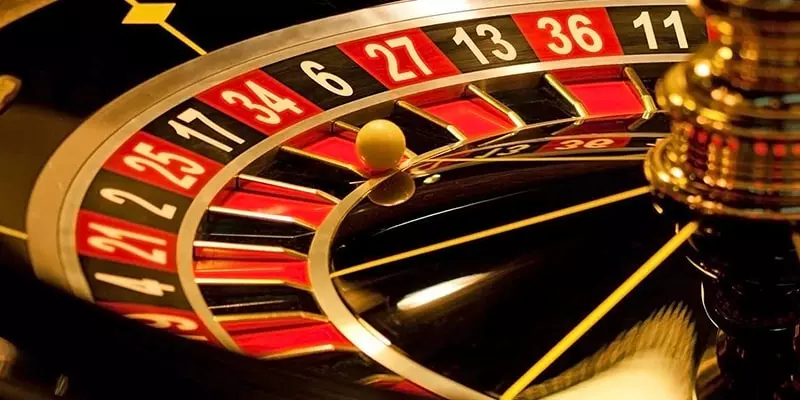
Casino enthusiasts who are intrigued by roulette can also encounter wheels that do not facilitate ball jumping. This is achieved through curved frets, but once again, the ball can easily go out of the pocket it initially landed in and keep on changing its position.
In an attempt to tinker with the roulette wheel, some manufacturers have created wheels with curved pockets. Once again, players will be rather powerless to make a correct pick as the ball can easily go out of the pocket it initially landed on.
The Quirks of Roulette
It is true to say that roulette is easily among the casino games that have lots of quirks. Gambling enthusiasts who are looking to enjoy a fruitful betting session or simply want to polish up their knowledge on the game should certainly make sure that they have inspected all its peculiarities.
The Biased Wheel
Although the outcome of each spin of the roulette wheel should be perfectly random, certain irregularities can be observed from time to time because of the wear and tear of the wheel or because of manufacturing defects. Furthermore, non-random traits are likely to become even more pronounced as a consequence of their heavy use. Needless to say, if such irregularities are detected, gambling enthusiasts can turn them to their good use, thus enjoying better results.
Sometimes, the roulette ball may not bounce on some areas of the wheel that much as it should normally do, which is known as deadening. There are also cases, in which specific sectors or pockets are favored as the frets have become too loose.
As it seems, many players who are intrigued by roulette tend to think that the randomness of the outcomes of each spin of the wheel is guaranteed due to the fact that the ball and the wheelhead rotate in the opposite directions. What players should be aware of is that the roulette wheel can be adjusted so as to favor a specific colour or numbers.
Ball Bounce
As we mentioned above, the present-day roulette balls are not molded of ivory, but of materials the likes of nylon, phenolic, and acetal. The material from which the roulette ball is made should not be overlooked because it will speak much in terms of its liveliness. Perhaps, players have already figured out that the higher the liveliness of the roulette ball is, the harder it will be for them to make a correct pick.
The usage of such roulette balls can be more advantageous, especially in the cases when the wheel is biased because they will be more likely to end up in that specific section or pocket, which therefore means that the bias will be further stepped up.
The Speed of the Wheelhead
This is one more detail that is worth taking into consideration as normally, its speed should be slow enough so that players could easily see the pocket on which the ball has ultimately landed. This is done also in order to ensure that the ball will not jump out of the wheelhead.
Yet, at some smaller casinos, the wheelhead is often spun at a faster speed, thus making it significantly harder for players to stay on top of the gameplay or figure out if the wheel is biased.
Ball Switching
Ball switching is a ploy that is often used when a player has enjoyed consistent wins. The approach of the dealers at the blackjack and craps tables is the same as players can often see them taking a new deck of cards or using a new pair of dice when one of their fellow players have snatched some decent rewards.
In the case of roulette, the additional balls are most likely to have different diameters, which will also have a major effect on the accuracy of the predictions players make.
Dealer’s Signature
While playing roulette at a brick-and-mortar casino, gambling enthusiasts should also pay attention to the dealer’s signature or in other words, the way in which he/she launches the ball. It should be noted, however, that it will have any meaning, provided that each time, the dealer launches the ball following exactly the same pattern.
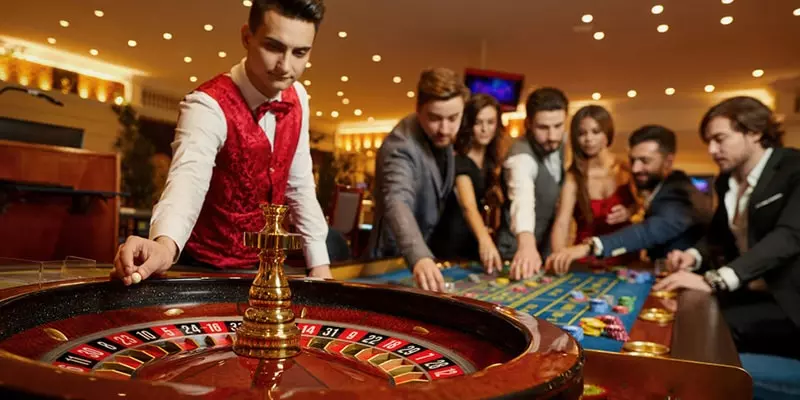
Therefore, when players see that another dealer is coming to the table, the signature will be changed. This is a ploy that is often utilised so as to thwart the attempts of players to win unfairly.
Ball Aiming
Something that might have drawn the attention of some players is that sometimes, the dealer might endeavor to direct the ball towards or away from a particular pocket. Yet, many experienced players will reject such a claim and will say that it is not possible to aim the ball accurately.
Yet, if you think that the dealer is employing this tactic, there are certain things you need to look for. Firstly, players should pay attention to the force the dealer uses while launching the ball. Typically, less force will be used in order to make sure that the ball will drop in one of the pockets more quickly.
The speed of the wheelhead is yet another factor to consider as if the dealer attempts to aim the ball at a specific number, the speed will be steady and rather slow. Finally, gambling enthusiasts should check out when exactly the dealer launches the ball, and more specifically, whether he/she is waiting for a particular number to make it to a certain position.
Yet, players can have the full confidence that the dealer is not trying to aim the ball if he/she does not keep a close watch on the wheelhead prior to launching the ball.